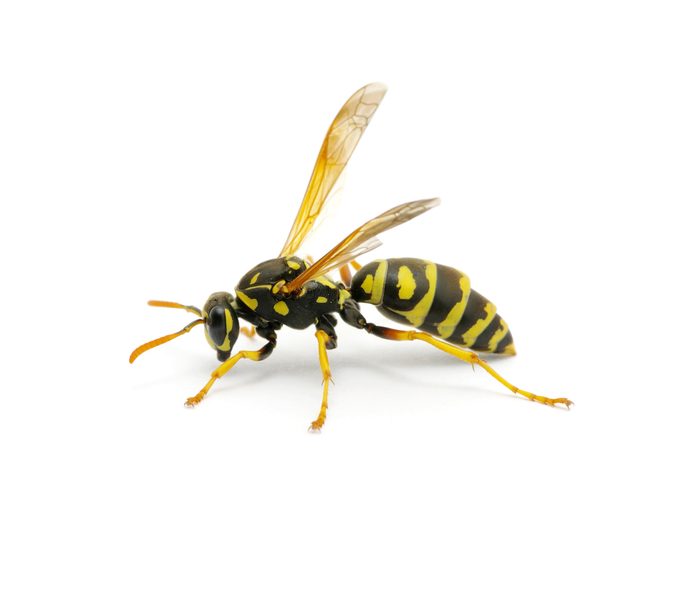6 Key Differences Between Bees and Wasps
Updated: Nov. 03, 2022
Use this handy guide to know whether it's a bee or wasp buzzing through your backyard.

Identifying Bees and Wasps
Wasps have slim bodies and narrow waists that connect thorax and abdomen. Bees have thick, rounded bodies with stripes. Check out more fascinating bumblebee facts, and learn how you can host mason bees with a bee house.
Look at the Wing Position
Two sets of wasp wings run parallel to the abdomen when folded down. Bees’ two sets of wings rest on top of the thorax (middle part of the body) when folded down. These are the top 10 plants for bees and other pollinators.
How Many Legs Do Bees Have?
Wasps have six long, skinny legs with several spines. Bees have six short, bulky legs that are flat, not rounded. Learn how to tell the difference between bees and flies.
Do Bees Die When They Sting?
The stinger stays with the wasp, meaning it can sting several times. A honeybee stinger stays in the victim, meaning the bee eventually dies. Other bees can sting multiple times. Discover 5 easy ways to help the bees.
Do Wasps Pollinate Plants?
Bees have pollen-collecting hair on their bodies, and females also have hair on their legs and bellies. But both bees and wasps are pollinators that will visit backyard blooms to sip on sweet nectar. Psst—try these natural ways to keep bees and ants away from hummingbird feeders.
What Do Bees and Wasps Eat?
Bees often get blamed for the aggressive and annoying tactics of wasps. As strict nectar and pollen eaters, bees spend most of their time foraging at flowers—and on their best behavior. Wasps are predators that are always on the hunt for their next meal, whether its insects or the food at your barbecue. Learn about 5 beneficial bees you want in your garden.




















